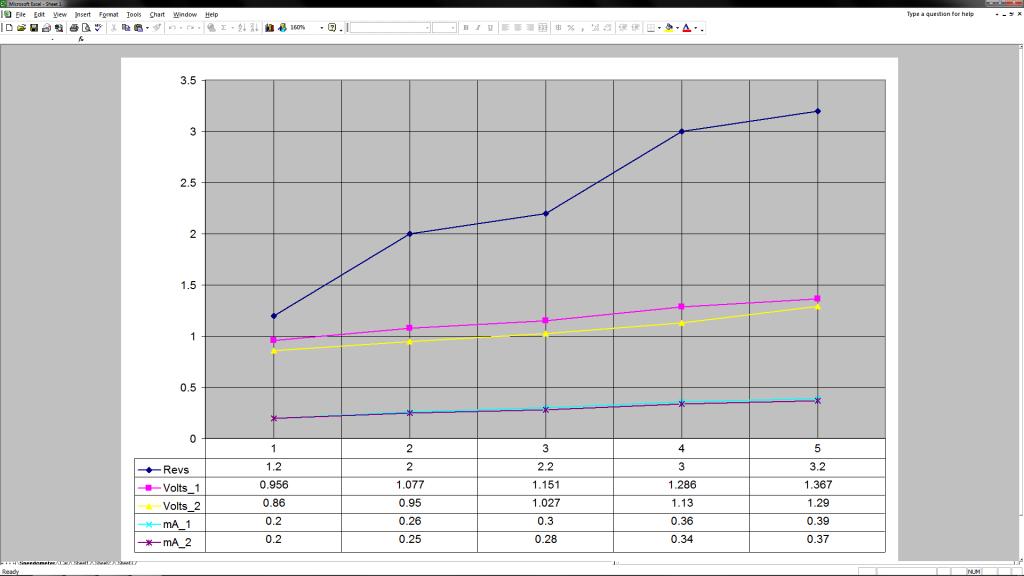Looking for chip
HI, I'm working on a project with the prop chip and my car. Obviously the chip can't handle 13v... but my other problem is that the speedometer has voltages as low as ~0.5v @ ~.11mA. My battery reading (for the car) was 12.85V @ 0.91mA So i don't know if there are any chips designed for this, or if anyone has any other ideas...? I added a Graph with my readings off the speedometer. But to clarify the speedometer is just the small end of the scale other parts have to deal with ~12V +



Comments
That'll do ya.
Could you post some links please.I'm not too good with electronics.
The problem with the obd2 approach is that the obd2 standard includes about 4 different ways of hardware interface, plus each manufacturer may have a different way of getting the speedo information out, because that isn't required in obd2, if I understand correctly. You'll note that some of the trip computers out there that use obd2 have a list of vehicles they work on, typically.
Take the initial signal and consider it dangerous because it's in an automotive environment.
As such, throw some ESD protection and overvoltage protection in front of it
then buffer it with a unity driver so you don't disturb any other electronics that are ahead of it
Then put a resistor divider in front of that so it's down to a usable level (let's say 5 volt'ish)
Then feed that usable level voltage into a voltage to frequency converter chip
Then feed the output frequency from that chip into your propeller. Correlate frequency to speed. :-)
I like this method...should allow you to calculate speed very quickly compared to precision ADC's.
I respect all the advice you have been given, but, depending on what other things you are wanting the projects prop to do, personally I would just do a sigma-delta software A/D converter inside the prop, and scale it for the voltage range you get from your spedometer (or is it tachometer since your graph shows RPM). The only parts you would need besides the basic Prop is two resistors and a 0.1 uf capacitor..... in all about 5 cents.extra.
As an added bonus, in assembler the software to do this is likely much smaller and simpler than any software to "talk" to an external A/D chip.
But you do need to understand how to accomplish this, and presuming you have some other applications for the Prop, I assume you are familiar with assembly programming.
Your statement that you are not too good with electronics does concern me a bit.
Cheers,
Peter (pjv)
If you are taking his signal which he defined as being 12V+ and put that into a non inverting opamp configuration with a gain of around 2, how would that solve things? How would that feed directly into the propeller? I'm confused.
Duane J
The VR sensors typically have 8 poles, some 4 poles, similar with Hall Effect sensors.
The right off-the-shelf chip is the LM1815 for interfacing with a VRS sensor. Most auto manufacturers interface the sensor single ended, which kindof defeats the purpose of a floating sensor, but that's another thing...
What make and model of automobile are you trying to interface the speed sensor on?
Ah, I see what's happening here...
You should be reading the speedo signal itself. Aka, the signal coming off the sensor on top of the transmission that sends a digital signal where its frequency is proportional to speed.
Instead, you are tapping into the signal that actually makes the speedometer needle move on the cluster.
..I would look into tapping into the speedo signal itself. It will be more accurate than pulling from ODB2. ODB2 has a delay to it and you can only sample so often. If you tap the sensor directly you can get the best data...and I don't think it should be too hard to tap that wire.
Looking up your car, it has a 3 pin speed sensor, which means it's most likely a hall-effect sensor, which will give you a straight 12v (or 5v) on/off for each pulse. I seem to recall many manufacturers setup the gearing of the sensor to generate 2000 pulses per mile, or some derivative thereof.
I would get a wiring diagram for your car, find where that output goes, then use a resistor to drop the signal, probably safe to start with a 22k, to read on a Prop input. You might want to try the Propeller scope firmware to play with the signals.
The "right" way to interface such a signal would be to use a 4N25 optoisolator to separate the prop, but a resistor will probably work for your needs.